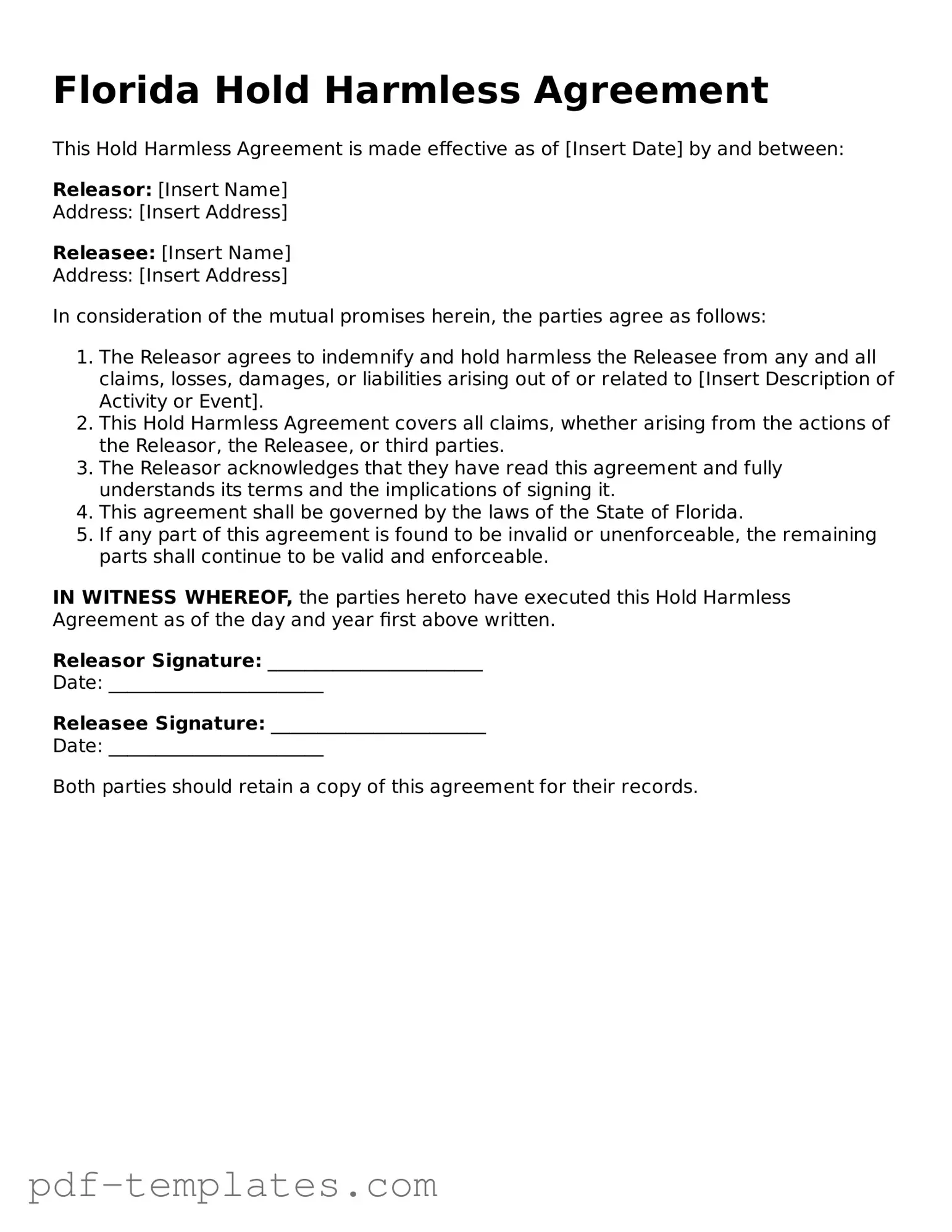The Release of Liability form is similar to the Florida Hold Harmless Agreement. Both documents aim to protect one party from legal claims. In a Release of Liability, an individual agrees not to hold another party responsible for injuries or damages that may occur during an activity. This document is often used in recreational settings, such as sports or events, where risks are present. Like the Hold Harmless Agreement, it emphasizes the participant's understanding of the risks involved.
The Indemnity Agreement also shares similarities with the Hold Harmless Agreement. This document involves one party agreeing to compensate another for certain damages or losses. In many cases, it is used in business transactions, where one party may assume responsibility for potential liabilities arising from the actions of another. Both agreements focus on risk management and liability protection, but the Indemnity Agreement often includes financial compensation aspects.
The Waiver of Liability is another document that aligns closely with the Hold Harmless Agreement. A Waiver of Liability allows individuals to relinquish their right to sue for negligence or harm. This document is commonly used in contexts like sports, fitness classes, or adventure activities. Similar to the Hold Harmless Agreement, it requires clear communication of risks and the participant's acceptance of those risks.
The Liability Insurance Policy can be compared to the Florida Hold Harmless Agreement as both serve to manage risks. While the Hold Harmless Agreement is a legal document that outlines responsibilities, a Liability Insurance Policy provides financial protection against claims. Individuals or businesses may use both to safeguard themselves from potential lawsuits, ensuring that they are prepared for unforeseen circumstances.
The Consent Form is another document that resembles the Hold Harmless Agreement. Consent Forms are often used to obtain permission for participation in activities that may involve risks. They inform individuals of the potential dangers and require their acknowledgment. Like the Hold Harmless Agreement, these forms aim to protect the organizing party from liability by ensuring that participants are aware of and accept the risks involved.
The Service Agreement also has some parallels with the Hold Harmless Agreement. A Service Agreement outlines the terms and conditions between parties when services are provided. It may include clauses that limit liability for one party in case of issues arising from the service. Both documents are focused on defining responsibilities and protecting against potential legal claims, though the Service Agreement typically involves ongoing professional relationships.
The Non-Disclosure Agreement (NDA) shares a focus on protecting interests, albeit in a different context. An NDA prevents parties from sharing confidential information. While it does not directly address liability like the Hold Harmless Agreement, it serves to protect a party from potential harm that could arise from unauthorized disclosures. Both documents are tools for risk management, albeit in different areas of concern.
Finally, the Partnership Agreement can be seen as related to the Hold Harmless Agreement in terms of liability management among partners. A Partnership Agreement outlines the roles, responsibilities, and liabilities of each partner in a business. Similar to the Hold Harmless Agreement, it aims to clarify expectations and protect each partner from unforeseen liabilities that may arise during the partnership.
